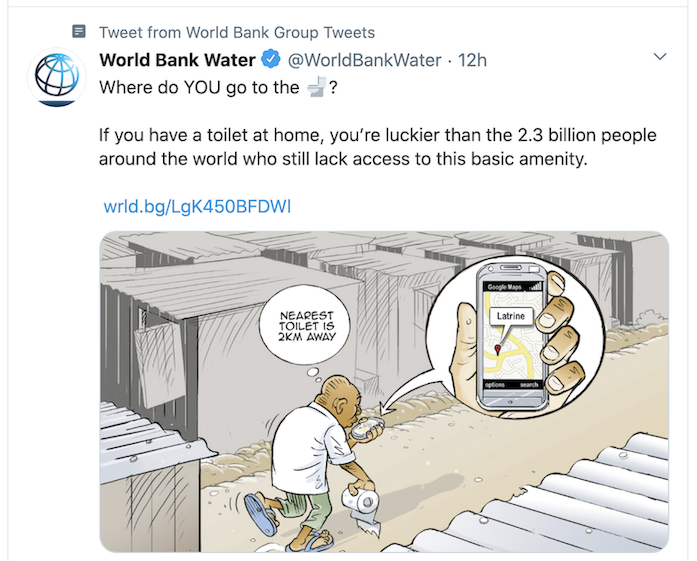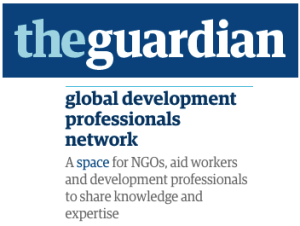(also applicable to Tik Tok or Instagram or whatever the short-video-platform fad of the month is)
The vast majority of nonprofits, NGOs and community-minded government programs do not have the staff nor the expertise to use every social media tool out there, or even most of the most-popular tools, especially with so many funders refusing to fund “overhead.” That means these mission-based programs are often late adopters when it comes to social media tools – it’s a wait-and-see-if-this-will-stick-around attitude.
During workshops I’ve lead in the last 12 months, I have been getting asked a lot about SnapChat. If you don’t know, SnapChat is a phone-based app that uses photos or videos, with text, to create its messages to an account’s subscribers; you have a fleeting moment to captivate your audience, because 10 seconds after a user opens the message, it disappears. Nonprofits, government agencies and other mission-based folks have asked me if I think it’s worth their time to use to get a message out. My answer is always, “it depends.” IMO, it depends on if you have a program about which you really, really want and need to reach tech-savvy young people. But to work, the messages have to be specifically targeted to that audience and platform (just 12% of SnapChats millions of users in the U.S. are 35 to 54, though they company says that demographic is growing). In other words, you can’t just repurpose what you’re posting to Facebook or Twitter.
Starting in 2013, every few months, there’s an article touting the possibilities of Snapchat for nonprofits – the latest is this article on Snapchat’s “Power for Social Good”. IMO, most of the articles, even this latest one, are just hype – yes, I’m sure everyone is talking about SnapChat at the big Consumer Electronics Show in Vegas this year. Yes, 90% of Snapchat followers are now consuming the content, but that was a similar number for Facebook or Twitter in the early days – it will plummet as more people use it, as more PARENTS use it, as people subscribe to more and more users, etc.
Still, given that Snapchat isn’t yet saturated with advertising (the company is still working on an ad model), and that it has an excellent viewer rate (around 90% of messages are viewed by subscribers), and that millions of young people are using it, the platform has promise, at least this year, and maybe for another year or two, as an effective outreach tool for people under 35 in particular.
Most articles about Snapchat use by mission-based entities are about its potential, not about how it’s actually being used by nonprofit, NGOs, government agencies, schools, etc. So, let’s look at three REAL examples of mission-based organizations doing something with SnapChat that made it worth their time (and note, these actual examples were REALLY hard to find):
Tenovus, a Welsh charity helping people with cancer, used Snapchat to generate media coverage for Volunteers’ Week in the UK. The charity teamed up with WalesOnline and asked supporters to take a #selflessie – a selfie of them doing something selfless – and send it to the charity and WalesOnline via Snapchat. The response was, apparently, excellent – but it would be interesting to know how many of these young people had perceptions changed about cancer, how many became volunteers for the cause, etc.
DoSomething.org is one of the largest nonprofits for teens and young adults in the USA, connecting 13-to-25 year olds to a wide variety of social causes and ideas of how to get involved. SnapChat users fall almost exactly within that age demographic. So, for instance, the organization ran a campaign in February called Love Letters, to encourage young people to make Valentine’s Day cards for homebound seniors, and to create excitement for the campaign, a staff member dressed up as Cupid and made a Snapchat story, using a series of photos with text, explaining that he was going to go out onto the streets of New York City and deliver Valentine’s Day cards, and he encouraged SnapChat followers to vote via text if he should deliver the cards by bike, ice skates or on foot in Central Park. The idea was that, if young people laughed at the photos and voted, they were more likely to make cards for seniors – though there’s no data on how many actually did so.
Save the Children has been using SnapChat since 2015. According to a thread I found on Facebook, “We have found we are getting HUGE engagement vs. other platforms (50% of our audience viewing our stories). We’ve used it for events like UNGA and our Gala, but find the best stories are those from the field where we are showing the children and families helped by our programs.” Save the Children exported their messages for their SnapChat photos that created a story about live in Jordan’s Zaatari refugee camp for Syrian refugees, so the messages wouldn’t disappear, and you can see this SnapChat campaign via Facebook. Unknown: were minds changed about refugees? Was there an increase in donations from young people because of this Snapchat use?
I still say “it depends” on whether or not a nonprofit should use Snapchat, but I will say that every nonprofit should be encouraging volunteers to use their social media channels, including Snapchat, if they are on it, to talk about and/or send pictures of themselves in action supporting a non-profit’s mission, like preparing food, cleaning up a trail, sitting at their computer while engaged in virtual volunteering, etc. But the organization needs to provide repeated guidance on this: volunteers need to always adhere to your organization’s social media policies regarding sharing photos online, they need to provide info on how their friends could also participate or get more information, etc.
A great way to involve young volunteers might be to invite them onsite to talk about how the nonprofit might use Snapchat to promote a specific message, and how those young people could actually undertake the activities for this to happen; this isn’t so that the nonprofit doesn’t have to get paid staff to do it but, rather, because these volunteers actually might be the best people to lead this activity, better than paid staff, because the organization can involve young people in a very memorable way and in a leadership capacity, and in a way that might become a story in-and-of-itself for the media. Just be sure that screen-capturing is a part of the campaign, so you can preserve and review messages long after those messages disappear on Snapchat!
Even if SnapChat loses its shine in a year or two, your use of it won’t be time wasted; we live in an era where we must be much more nimble in crafting our messages for different online platforms. What you learn using SnapChat is going to help you use whatever takes its place as the shiny new popular kid in a year or two (update: that’s now Tik Tok and Instagram).
Update March 25: justgiving.com has an article called 7 charities that totally get Snapchat (no publication date given) and it highlights Do Something Snapchat activities (see above), as well as:
The organization Penny Appeal and World Champion Boxer Amir Khan’s Snapchat story of welcoming Syrian refugees as they landed on the Greek island of Lesbos, to create awareness about their plight.
Young Enterprise NI in the U.K., which uses Snapchat to provide young people with “bite-size” business tips and advice.
Royal National Lifeboat Institution, also in the U.K., which uses it to “have conversations with our supporters… to raise awareness of our lifesaving work.” The RNLI has used it to organize competitions, share coastal safety advice and tell stories of their volunteer lifeboat crew.
MuslimAid, a charity in the U.K. that says it uses it “as a key volunteer recruitment tool and as a hassle-free way of bringing their events to life.”
Brazilian environmental NGO OndAzul, which shared 10 second Nature Snapfacts with their followers. “Teens who opened their Snap would catch a fleeting glimpse of natural beauty being destroyed by man made hazards.”
The Danish branch of World Wildlife Fund (WWF) used Snapchat to emphasize the speed at which endangered species disappear. Each ad featured one of five endangered animals with the tagline ‘Don’t let this be my #LastSelfie’.
Update April 5: Beth Kanter has a new blog that adds a few more examples and links to some tutorials.
Update July 14, 2020: How Your Nonprofit Can Use TikTok. By Classy, a social enterprise that creates online fundraising software.
I’ve read a lot about SnapChat, and dabbled with it myself, and the suggested practices talked about in the aforementioned case studies yet again confirms what Susan Ellis and I promote in The Last Virtual Volunteering Guidebook. Online tools come and go, but certain community engagement principles never change, online or onsite, and our book can be used with the very latest digital engagement initiatives and “hot” new technologies meant to help people volunteer, advocate for causes they care about, connect with communities and make a difference – even if those technologies didn’t exist when we wrote this book.
If you have benefited from this blog or other parts of my web site and would like to support the time that went into researching information, developing material, preparing articles, updating pages, etc. (I receive no funding for this work), here is how you can help.


 So much of what the press and bloggers herald now as pioneering or disruptive on the Internet isn’t at all. In 1995, I was talking online with friends, old and new, in all the ways I do now, with the exception of live video: we were writing messages in real-time and messages posted somewhere to read later. We were making and sharing audios and videos. We were creating communities. We were using online tools to train, to learn, to change minds, to promote ideas and to research. The names of the tools have changed, and they have all definitely gotten more sophisticated, but rarely do I read an article about something new online and find that, in fact, it really is something new, innovative, or disruptive.
Many tech pioneers and early tech history have been forgotten, and web sites that detailed these efforts are gone, sometimes not even available on the
So much of what the press and bloggers herald now as pioneering or disruptive on the Internet isn’t at all. In 1995, I was talking online with friends, old and new, in all the ways I do now, with the exception of live video: we were writing messages in real-time and messages posted somewhere to read later. We were making and sharing audios and videos. We were creating communities. We were using online tools to train, to learn, to change minds, to promote ideas and to research. The names of the tools have changed, and they have all definitely gotten more sophisticated, but rarely do I read an article about something new online and find that, in fact, it really is something new, innovative, or disruptive.
Many tech pioneers and early tech history have been forgotten, and web sites that detailed these efforts are gone, sometimes not even available on the 
 Looking for a gift for someone in your life that works with volunteers, either as a volunteer themselves or as an official manager of such? Or a gift idea for someone studying for a degree in nonprofit management? Or anyone working at a nonprofit, a non-government organization (NGO), or a government program that engages volunteers?
Looking for a gift for someone in your life that works with volunteers, either as a volunteer themselves or as an official manager of such? Or a gift idea for someone studying for a degree in nonprofit management? Or anyone working at a nonprofit, a non-government organization (NGO), or a government program that engages volunteers?


